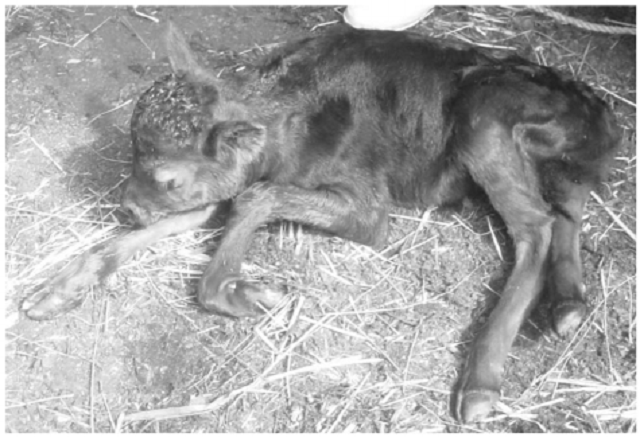
The Sunday News

Mhlupheki Dube
ONE of my cows recently calved down and what became very apparent to me was that the calf was generally unthrifty despite clear features that promised to produce a big framed animal. Unthrifty refers to the general untidiness and lack of vigour of the calf. The kind of calf that appears sickly from the onset.
My suspicion is that it is suffering from a weak calf syndrome and therefore, I have decided to share a few notes on this particular condition as I know very well that some farmers could have experienced similar cases.
Weak calf syndrome refers to a complex of syndromes that result in a calf that fails to thrive. These calves usually fail to suckle adequately, resulting in illness and commonly death shortly after birth. However, some can live only to die around seven months to two years of age.
Calves with this syndrome are born alive but show a reluctance to stand or nurse at birth. The calves are generally slow moving, lethargic, and may have a hunched posture if they are able to stand.
If the calf does not suckle adequate colostrum it may become susceptible to a number of infections hence these calves die within days of birth.
Weak calves can be the result of a number of different factors including poor nutrition of the dam during critical times of pregnancy. Nutritional factors include inadequate protein and/or energy intake by the dam, and selenium and iodine deficiency.
Infectious causes such as Bovine Viral Diarrheoa Virus and leptospirosis have also been noted to result in weak calves being born.
If the unborn calf is infected late in pregnancy, it can be stillborn. If the bovine viral diarrhoea virus does not kill the calf it will be born stunted or weak. The calf will be a carrier of the virus and it can spread it to your herd.
Difficult births can also contribute to unthrifty calves, as these calves are generally born stressed and low oxygen levels can result in temporary or permanent damage to the central nervous system. An increased incidence of this condition has been reported in heifers with prolonged labour as this may contribute to low oxygen tension in the newborn calf.
The most effective way of preventing weak calves is the provision of adequate nutrition of the dam during pregnancy. Most of the growth of the foetus occurs in the last trimester hence this is the most critical period for ensuring that your pregnant cows get optimum plane of nutrition.
Low protein diets have been proven to be a predisposing factor for birth of weak calves. During late gestation, nitrogen becomes a limiting factor in rumen metabolism since it is required for rumen microbes to convert forage to amino acids which can be utilised by the dam for energy. By increasing protein intake the digestive efficiency of the dam is greatly increased.
A good plane of nutrition will maintain a good body condition score for the dam which is important for foetus development.
The dam should be vaccinated against bovine viral diarrhoea so as to prevent birth of weak unthrifty calves.
Vaccination of the dam prevents utero infection as well as supporting the development of colostral antibodies that will protect the calf after birth.
The calves infected with bovine viral diarrhoea become what is known as persistently infected calves. The existence of persistently infected calves in your herd can result in increased number of open cows; abortions; weak or dead calves at birth; birth defects; increased percentage of calves with sickness including scours, pneumonia and lameness; poorly unthrifty calves; calves dying post weaning.
Treatment for calves affected by weak calf syndrome is primarily supportive through monitoring its progress in activities such as nursing from the dam and standing.
Calves that are too weak to suckle should be bottle fed especially during the first 36 hours after birth so that they can get colostrum. After this time frame antibodies are no longer absorbed from colostrum.
Calves should be closely monitored for hypothermia after birth, as this can significantly contribute to their unwillingness to stand and suckle.
Encourage the dam to lick the calf dry.
Dry calving areas will greatly decrease the likelihood of significant hypothermia.
Calves should be closely monitored for the first few weeks of life as weakness at birth predisposes them to scours, respiratory disease, and other infections.
It is important to note that weak calves need close attention to ensure that it is properly suckling, it is getting adequate milk and that there is nothing that is predisposing it to infection.
If the weakness of the calf was merely due to poor nutrition during the in calf period of the dam, the calf will recover and improve its condition significantly if it is provided proper care.
However, if the calf is infected with bovine viral diarrhoea it will largely remain unthrifty and may not live beyond two years.
Uyabonga umntakaMaKhumalo.
Feedback [email protected] or cell 0772851275.



